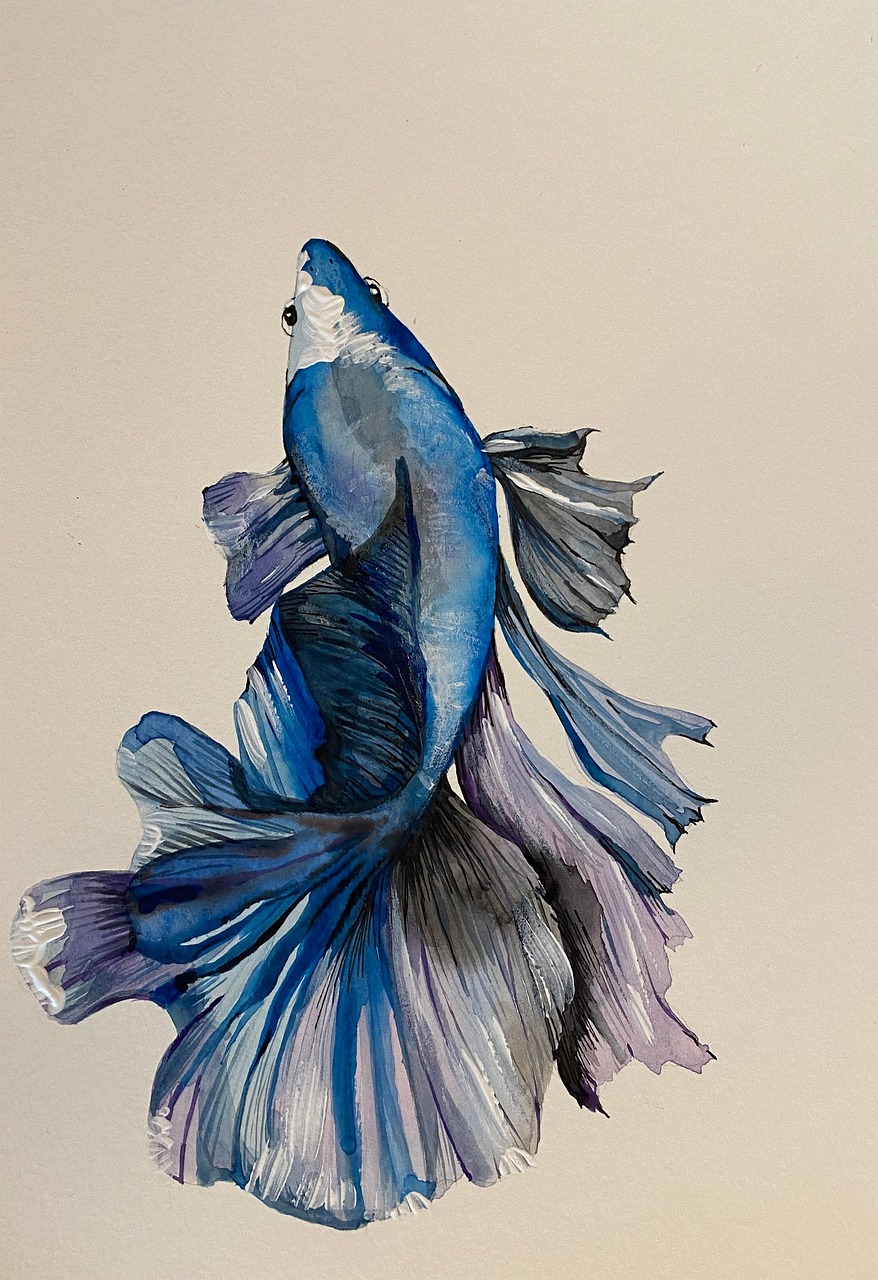Why Your Betta Tank Looks Cloudy (and Why It Matters)
A cloudy tank can appear overnight — in fact, many new setups show a milky haze within days. This is more than annoying: cloudiness often signals poor water quality, a bacterial bloom, or decaying matter that stresses your betta and invites disease. Stay calm; most causes are fixable.
This guide gives fast first-aid to protect your fish and clear the water, plus deeper fixes so the problem doesn’t return. Follow simple tests, safe quick-fixes, and maintenance habits to keep glass sparkling and your betta healthy. You can fix this quickly today.




Spot the Cloud: Types of Cloudiness and What They Mean
Not all cloudy water is the same. Below are the four common cloud types, how to recognize them, what usually causes them, and whether you need to act fast or can fix them yourself.
Milky-white bacterial bloom
Visual cue: a uniform, chalky, milk-like haze that can make the whole tank look foggy.Causes: new tank cycling, sudden nutrient spike (overfeeding), or a big water change disturbing the biofilm.Emergency? Rarely — usually harmless if fish are acting normal.Quick tips:
Green water (free-floating algae)
Visual cue: pea-soup green tint; particles float and can make water glow under light.Causes: excess light, high nitrates/phosphates, or direct sunlight.Emergency? Not immediately, but persistent blooms stress fish and reduce oxygen at night.Quick tips:
Brown tannin-stained water
Visual cue: clear brown or tea-colored water.Causes: driftwood, Indian almond leaves, or peat leaching tannins.Emergency? No — harmless and natural; tannins can lower pH slightly.Quick tips: boil new wood, pre-soak leaves/wood to reduce staining, or use activated carbon if you want clear water fast.
Particulate cloudiness
Visual cue: gritty, suspended bits — substrate dust, uneaten food, or stirred-up debris.Causes: poor mechanical filtration, vacuuming disturbance, or overzealous decor cleaning.Emergency? No, but persistent particles indicate filter problems.Quick tips: siphon the substrate, clean or upgrade mechanical filter media (sponge, floss), and slow down water flow while cleaning.
Next up: learn how to test your water like a pro so you can pinpoint the problem fast.
Test Like a Pro: What Water Parameters to Check First
Before you start poking at filters or doing giant water changes, test the water. These tests tell you what’s actually wrong and point to fast, safe fixes.
Ammonia (NH3/NH4+)
Nitrite (NO2-)
Nitrate (NO3-)
pH
Temperature
Hardness (GH/KH)
Chlorine / Chloramine
For reliable readings, use a liquid master kit rather than strips—liquid tests (API, Salifert) are more accurate. For quick checks, strips like Tetra EasyStrips can help, but confirm with liquid tests when values are off.
Where/how to sample: dip a clean cup mid-water (not surface foam), test at tank temp. During troubleshooting, test immediately, then daily until stable — if ammonia/nitrite are high, retest every 6–12 hours while you take corrective action. Next up: quick, safe fixes you can do right now to clear cloudy water.
Quick Fixes: Fast Steps to Clear Cloudy Water Safely
When water goes milky and your betta looks stressed, act fast but gently. These step-by-step emergency actions get clarity back without nuking the tank’s good bacteria.
Emergency water change: how much and when
Use a clean bucket, heat replacement water to within 1–2°F of tank temp, and treat for chlorine/chloramine (Seachem Prime or API Tap Water Conditioner). Avoid adding new water cold or chemically different — sudden temp or pH shifts stress bettas.
Siphon, vacuum, remove debris
Siphon surface scum and vacuum the substrate to pull out uneaten food and detritus. Tools like a Python gravel vacuum or a simple hand siphon/turkey baster work great for quick cleanup. Pull visible waste from corners and under plants — many cloudy tanks clear dramatically after this step.
Filter and media handling
When to avoid chemicals: skip antibiotics, algaecides, or heavy-dose treatments unless a vet/diagnosis supports them. Overmedicating kills beneficial bacteria and can worsen cloudy water.
Quick dos and don’ts:
Fix the System: Filtration, Cycling, and Beneficial Bacteria
How biological filtration actually works (plain language)
Think of your filter and gravel as a microscopic farm. Beneficial nitrifying bacteria colonize surfaces — filter sponge, ceramic rings, gravel, plant roots, decorations — and eat toxic ammonia (from waste) and turn it into nitrite, then another bacteria turns nitrite into nitrate. That “two-step” cleanup prevents poison buildup. Wiping out this bacterial colony (with harsh cleaning or replacing all media at once) is why tanks suddenly go cloudy or spike in ammonia.
Filter choices for bettas
Bettas like calm water. Good options:
Examples: a small sponge filter for a 2–10 gal tank or an adjustable AquaClear HOB with a foam guard. The goal: adequate mechanical trapping + lots of bio-media.
Mechanical media vs. bio-media
How to seed a new filter (fast, practical)
Routine that preserves bacteria
Create friendly flow
Biological Troubles: Bacterial Blooms, Overfeeding, and Decay
This deeper dive focuses on biological causes that often underlie persistent cloudiness and what to do about them fast.
Bacterial blooms — why water turns milky
When ammonia or organic nutrients spike, opportunistic heterotrophic bacteria explode in number. They reproduce quickly, cloud the water with a milky haze, then crash when the food source is used up. You’ll often see this after overcleaning a filter, adding lots of fish, or a sudden feast of decaying matter.
Starve the bloom: feeding and waste control
Overfeeding is the most common trigger. A quick, real-world tip: if pellets sit uneaten after 30 seconds, you’re feeding too much.
Remove the fuel: decay and targeted cleaning
Get rid of whatever is feeding the bloom: dead leaves, rotten decor, leftover food.
If your tank lacks an established bacterial population, adding a commercial starter can speed recovery. A reliable option for small tanks is the API Quick Start Nitrifying Bacteria 16oz Bottle
Tools, cautions, and expected timeline
A temporary UV clarifier (e.g., small in-line or submersible UV for tanks under 20 gal) can clear free-floating bacteria quickly, but only use it after you’ve removed nutrient sources—otherwise the bloom will recur. Avoid blanket use of antibiotics; they kill both bad and good bacteria and can make cycling take longer unless a bacterial disease has been diagnosed.
Expect visible clearing within 24–72 hours after fixes; full biological balance can take 1–3 weeks. Up next: practical daily habits that keep your water this clear.
Keep It Clear: Routine Maintenance and Good Habits
Prevention is easier than recovery. A few steady habits keep your betta tank sparkling and cut the odds of a bacterial bloom or algae flare-up. Here’s a friendly, actionable routine you can start this week.
Weekly & monthly schedule (practical dos and don’ts)
Vacuum substrate lightly weekly; deep vacuum monthly to remove settled organics. Rinse mechanical filter media every 2–4 weeks in removed tank water (never tap water). Replace filter cartridges per manufacturer—don’t yank out all biological media at once.
Media, plants, and feeding rules
Quarantine and lifestyle tips
Quarantine new fish or plants for 7–14 days in a separate tub to spot hitchhikers or disease. Keep a consistent light cycle (8–10 hours) to limit algae. Avoid overstocking—betta = one fish per small tank—and watch for early warning signs: milky water, greasy film on the surface, sudden smell, or your betta hiding/gasping.
Quick prevention checklist
With these habits, cloudiness becomes a rare annoyance — next up is a concise checklist to wrap the article.
Clear Water, Happy Betta: Quick Checklist and Final Tips
Test water first, do a careful 25–50% partial change, remove visible waste, and check filtration and that the tank is cycled. These actions fix most cloudy tanks fast and safely; avoid panic treatments and sudden full changes.
Checklist: identify cloud type, test ammonia/nitrite/nitrate/pH, perform emergency partial change if ammonia or nitrite are high, skim debris, clean or upgrade filter media, and resume gentle feedings and regular water changes. With consistent habits your betta’s water clears quickly and stays clear—happy fish, happy you. Ask your local fish store or forum for help.










Bacterial bloom story time — had a new tank, overfed for two days (oops), and suddenly the water looked like milk.
Followed the article: checked params with the API kit, removed uneaten food, added Marineland Black Diamond Activated Carbon for a couple days, and used Pawfly sponge filters to increase bio-surface.
It cleared up in about 48 hours. Lesson learned: less food, better filter. Also, if anyone’s thinking of nuking the tank with meds, try water changes + bacterial starter first.
I removed the carbon after 3 days. It helped clear tannins and smelly stuff fast. You’re right — don’t leave it if you’re trying to establish bacteria or if treating with meds.
Thanks for sharing the experience, Joan — exactly the kind of real-life tip that helps readers. Pawfly sponge filters are great for small setups since they boost nitrifying bacteria colonization without stressing the betta.
Nice! Did you leave the carbon in permanently or just short-term? I read somewhere carbon can remove beneficial meds/bacteria too.
Correct — activated carbon is best used short-term for clarity/odors. If you’re cycling or dosing nitrifying bacteria, skip the carbon or remove it temporarily.
Same here. I only run carbon after heavy tank cleaning or if the water smells. Keeping it out most of the time helped my cycle develop.
LOL, bettas eating like tiny vacuum cleaners = main reason tanks go cloudy.
I swear my boy gives me the puppy eyes and I overfeed every time 🙄
Switched to NICREW Slim HOB Filter + smaller portions and it’s way better. Also, carbons are magic but don’t forget to rinse before use!
Totally relate. I started using a feeding stick and measuring out 2 pellets max. Game changer.
Hah, betta eyes are dangerous! NICREW HOBs are great for nano tanks — good flow without too much surface agitation. And yes, rinse activated carbon (Marineland Black Diamond) to remove dust before adding.
Quick tip for anyone running tiny tanks: I used Pawfly 3-Pack Sponge Filters and love them for backups. One of my tanks had recurring cloudiness until I started doing consistent maintenance every week — 20% water change + siphon the gravel.
Question: how often should I replace the sponge on the Pawfly? It gets gunky after a couple months.
Glad the sponge filters helped. You generally don’t need to replace the sponge unless it’s falling apart or has an unpleasant smell after thorough rinsing. Every 6–12 months is common; just rinse in tank water during water changes to preserve beneficial bacteria.
Nice read. Short and to the point.
One thing: your spot-the-cloud chart would be nicer with images. Visuals help a lot when you’re trying to figure out if it’s bacterial bloom or just algae.
Hi — thanks for the thorough checklist. I have a couple of picky questions because my local pet store pushed the API Freshwater Master Test Kit but it was pricey. Is it really worth the 800-tests claim?
Also, I’m unsure when to choose a sponge filter like Pawfly vs an internal filter like Tetra Whisper 4i, especially for a 2.5 gallon. I worry about too much flow stressing the betta.
Extra: any tips on cleaning Marineland Black Diamond carbon (do you boil? rinse?) and how often to replace it if you do use it? Thx! 🙂
Carbon in my experience: replace monthly if you notice cloudiness returning or smell. Otherwise 6-8 weeks is fine.
Great questions. The API Master Test Kit is a solid value if you test frequently — the test strips/pads can add up, and the kit’s reagents give more precise readings. For a 2.5 gal tank, sponge filters (Pawfly) are often better because they provide gentle flow and lots of surface area for bacteria. Tetra Whisper 4i is fine if you can reduce the flow with a diffuser.
Rinse carbon under tap water until the rinse runs relatively clear — no need to boil. Replace carbon every 2–4 weeks depending on tank load and if it’s removing odors/tannins.
You can also get test strips for quick checks, but the API kit is more reliable for nitrite/nitrate/ammonia.
For tiny tanks I prefer sponge filters — they also double as a place to put beneficial bacteria when doing water changes.
If budget’s tight, buy the API kit when there’s a sale. I split costs with a friend once and saved a ton.
I bought the API kit and it’s lasted ages because I don’t test every day. Monthly checks + spot tests after feedings/treatments have been enough for me.
This article was super helpful — finally figured out why my little tank turned pea-soup green 😅
I had a tiny sponge filter at first but switched to the Tetra Whisper 4i Internal Filter like you suggested and it made a big difference.
I also used the API Tap Water Conditioner when doing a water change, and my betta perked up immediately.
Quick question: how long should I wait after adding API Quick Start Nitrifying Bacteria before expecting ammonia to drop?
Great to hear it helped, Hannah! Typically you should see some improvement in ammonia within 24–48 hours after adding API Quick Start, but full cycling benefits can take a few days. Keep testing with the API Freshwater Master Test Kit and do small water changes if ammonia spikes.
Agree with admin — test, test, test. I usually do 25% water changes daily if I see ammonia >0.5 until levels settle.
I had the same question a while back. For me it took about 3 days to see consistent 0 ammonia after adding Quick Start, but I also cleaned out some decaying plants which helped.